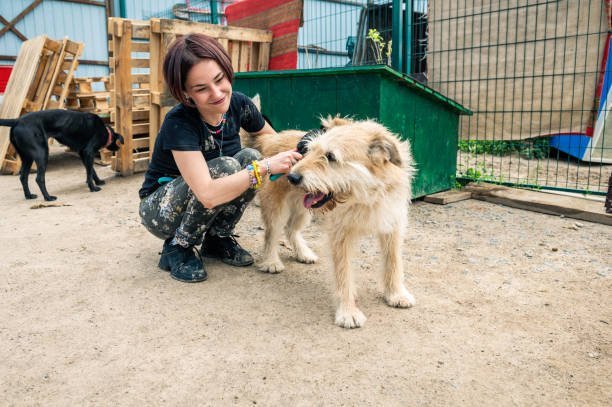Can you provide tips on how to safely approach and rescue a stranded marine animal?

Introduction:
In this article, we embark on a journey to explore a vital aspect of marine conservation and humanitarianism. In an era where environmental awareness is paramount, encountering stranded marine animals is a reality many may face.
In this context, we will delve into the essential knowledge and guidelines for safely approaching and aiding marine animals in distress. Whether it’s a stranded dolphin, sea turtle, or seal, the instinct to help these magnificent creatures is commendable. However, proper knowledge and precautions are paramount to ensure both the rescuer’s safety and the well-being of the animal.
In this article, we will empower readers with the information and expertise needed to respond effectively and responsibly when faced with the challenging task of aiding stranded marine life.
Assess the Situation Safely:
When encountering a stranded marine animal, the first crucial step is to assess the situation safely. Approach the animal cautiously, keeping a safe distance, and avoiding sudden movements that could startle or stress it further. Take note of the animal’s size, condition, and behavior, as well as its location and proximity to the water. Ensure your safety and the safety of others present.
Assessment includes observing for signs of injury, entanglement, or distress. A stranded animal may be disoriented, injured, or in need of immediate assistance. It’s essential to gather as much information as possible to relay to authorities and experts who can provide guidance on the appropriate actions to take.
Keep a Safe Distance:
Maintaining a safe distance from the stranded marine animal is vital for both your safety and the well-being of the creature. Wild marine animals, even when stranded, can be unpredictable and may become agitated or defensive if they feel threatened or cornered. Approach from a distance that allows you to assess the situation without causing unnecessary stress.
Different species may have different safe distances, so it’s crucial to research the specific animal you are dealing with and follow guidelines provided by local authorities or marine mammal experts. In general, keeping a distance of at least 100 feet (30 meters) is recommended. Using binoculars or a camera with a telephoto lens can help you observe and document the animal’s condition without getting too close.
Contact Local Authorities and Experts:
Upon encountering a stranded marine animal, it is essential to contact local authorities and marine mammal or wildlife experts immediately. Local wildlife agencies, marine mammal rescue organizations, and environmental agencies are equipped to assess the situation, provide guidance, and coordinate a response.
Reporting the stranding allows experts to determine if the animal requires rescue or medical attention, or if it’s simply resting during a normal part of its life cycle. They can also provide information on relevant regulations and laws regarding marine animal rescue and rehabilitation.
In many regions, it is illegal for individuals to attempt to rescue or interact with stranded marine animals without proper permits and training. By contacting local authorities and experts, you ensure that the rescue efforts are conducted legally, safely, and with the best interests of the animal in mind. These experts have the experience and equipment necessary to handle marine animal rescues effectively and responsibly.
Provide Basic Care and Support:
Once authorities and experts have assessed the situation and deemed it necessary to provide assistance to the stranded marine animal, providing basic care and support becomes paramount. This includes ensuring the animal’s comfort, hydration, and protection from environmental elements. It’s essential to follow guidance from experts and trained responders to avoid causing further harm.
For marine mammals, particularly seals and sea lions, providing shade, keeping the animal wet, and minimizing human disturbance are essential steps. In some cases, marine mammal rescue teams may set up temporary enclosures to protect the animal while they assess its condition and provide necessary medical treatment.
For sea turtles, offering shade, avoiding handling, and keeping them in a quiet, safe area are vital. Marine reptiles are often stressed when stranded, and minimizing stress is crucial for their recovery.
Handle with Caution:
Handling stranded marine animals should only be undertaken by trained and authorized personnel. In many cases, attempting to handle these creatures without expertise can result in injury to both the animal and the rescuer. Marine mammals, such as seals, sea lions, or dolphins, have powerful jaws and sharp teeth and can transmit diseases to humans.
Even when handling is necessary for medical treatment or transport, it should be done with extreme caution, appropriate safety gear, and under the guidance of experts. Specific protocols for handling different species and situations should be followed rigorously to ensure the safety of all involved.
For sea turtles or smaller marine animals, minimal handling is usually the best practice. Placing them in a transport container or gently assisting them back into the water, if appropriate, should be done with care and respect for the animal’s well-being.
Promote Public Awareness and Education:
Strandings of marine animals provide an opportunity to promote public awareness and education about marine conservation. When responding to a stranded marine animal, authorities and experts can use the situation to engage with the public, explaining the importance of these creatures to marine ecosystems and the threats they face.
Public awareness campaigns can also help prevent future strandings by educating people about responsible boating practices, fishing gear disposal, and the harmful effects of plastic pollution on marine life.
These events can serve as a reminder of the interconnectedness of human actions and the health of marine environments. Encouraging responsible behavior and conservation efforts can contribute to the long-term well-being of marine animals and their habitats.
Conclusion:
I hope that this exploration of safely approaching and rescuing stranded marine animals has underscored the critical importance of knowledgeable, responsible actions in such situations. The outlined guidelines, including assessing the situation, maintaining a safe distance, contacting local authorities and experts, providing basic care and support, handling with caution, and promoting public awareness and education, collectively form a comprehensive approach to ensure the well-being of these remarkable creatures.
Strandings of marine animals are opportunities not only for rescue but also for fostering public understanding and compassion toward marine life and ocean conservation. By adhering to these principles and collaborating with local authorities and experts, we can minimize the stress and risks associated with stranded marine animals while working toward their rehabilitation and eventual return to their natural habitats.
It is through our collective efforts that we can play a meaningful role in preserving the delicate balance of our marine ecosystems and safeguarding the welfare of these awe-inspiring beings that share our planet’s oceans.










Post Comment